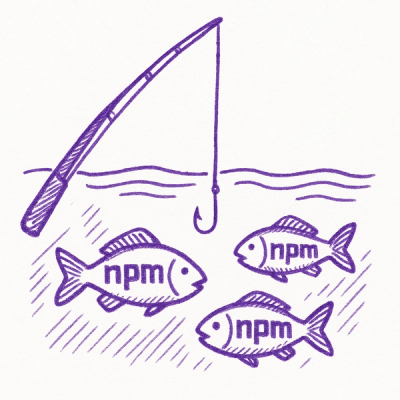
Security News
Bun 1.2.19 Adds Isolated Installs for Better Monorepo Support
Bun 1.2.19 introduces isolated installs for smoother monorepo workflows, along with performance boosts, new tooling, and key compatibility fixes.
github.com/sendinblue/bigtable-access-layer
bigtable-access-layer is a library designed to ease reading data from Big Table. it features:
count(), min(), max(), sum()The description above is a summary of Big Table's design and is meant to help you understand it quickly. Please refer to the official documentation provided by Google for further reference https://cloud.google.com/bigtable/docs/
Big Table is a No-SQL database, it stores rows in tables, with sets of columns inside column families.
A table must have at least one column family and can have multiple ones. Each column family has its own expiration policy.
A row is a set of cells each cell being made of a timestamp, a column qualifier and a value. The column qualifier is the combination of the column family and the column name, separated by a :. For instance, the column named "temperature" in the column family "weather" will have the column qualifier "weather:temperature".
Each row has a unique row key, which is a string made of whatever needed to identify the row.
Big Table is really efficient when used to store time series data. The trade-off is that it treats all column qualifiers as data. This means that the longer a column name is, the more it will take space on storage and the more it will have a hit on performances. It will also have an impact on the financial aspect: a higher space usage comes with a higher cost, so there are actually two main reasons to optimize the storage of data in Big Table:
That's why bigtable-access-layer offers a mapping system, it will allow you to reduce space usage without losing the functional meaning of the data. The library also provides functions to aggregate data like it's possible to do in the SQL world with functions like count(), min(), max(), sum() and the GROUP BY clause.
This library fits fine when you want to store time series data in Big Table like:
In those use-cases, each row will be a logical set of events, with its row key built in a way it can be easily identified and will contain a manageable number of events. For instance, a row key could include the region of the weather station, the year and the week number separated with # to look like europe-west1#2021#week1. Each event is a set of cells sharing the same timestamp, so when the access-layer turns a row into a set of events, it groups cells by timestamp to end with one event / timestamp. Here's an example from Google's documentation: https://cloud.google.com/bigtable/docs/schema-design-time-series#time-buckets
Big Table treats column qualifiers as data, not metadata, meaning that each character in a column qualifier counts. So the longer a column qualifier is, the more it will use space. As a consequence, Google recommends using the column qualifier as data or if it's not possible, to use short but meaningful column names. It will save space and reduce amount of transferred data.
The mapping system is here to turn short column names into human-readable equivalent. It can also be used when the column qualifier contains data, granted it is an "enum" as defined in the mapping.
here's an example of a mapping:
{
"raws": {
"ui": "user_id"
},
"mapped": {
"oi": {
"name": "is_opted_in",
"values": {
"0": "false",
"1": "true"
}
}
},
"reversed": [
{
"name": "order_status",
"values": {
"1": "pending_payment",
"2": "failed",
"3": "processing",
"4": "completed",
"5": "on_hold",
"6": "canceled",
"7": "refunded"
}
}
]
}
Here, each column is an example of a mapping method supported by the library:
raws contains columns for which the short qualifier will be replaced by the long version. Here, "ui" will be replaced by "user_id".mapped contains columns for which the short qualifier will be replaced by the long version (name property) and the value will be replaced by the mapped value. Here, "oi" will be replaced by "is_opted_in" and the value will be replaced by "true" or "false".reversed contains columns for which the short qualifier will be used as the value and the name property will be used for the column qualifier. Here, a column named "1" will result to order_status=pending_payment.In the example below we read a row through the repository to get a set of events.
repo := repository.NewRepository(client.Open(tableID), mapper)
dataSet, err := repo.Read(ctx, rowKey)
if err != nil {
log.Fatalf("impossible to read the data: %v\n", err)
}
for _, familyEvents := range dataSet.Events {
for _, event := range familyEvents {
fmt.Fprintf(out, "%s - %s: %+v\n", event.RowKey, event.Date, event.Cells)
}
}
It is possible to aggregate data from multiple events into a single one. It can be seen as the equivalent of a SQL GROUP BY clause like in the example below:
SELECT event_type, device_type, COUNT(*) as `count`, SUM(amount) AS total FROM events GROUP BY event_type, device_type;
Using the library, we can do the same on client side:
// we first fetch the row
repo := repository.NewRepository(cl.Open(tableID), mapper)
set, err := repo.Read(ctx, rowKey)
if err != nil {
log.Fatalf("impossible to read the data: %v\n", err)
}
cnt := aggregation.NewCount("count")
total := aggregation.NewSum("amount", "total")
aggregationSet := aggregation.NewAggregationSet()
aggregationSet.Add(cnt.Compute)
aggregationSet.Add(total.Compute)
// like in the SQL world, we'll find fields from the last line browsed by the engine.
// So we get a merge of the aggregated columns (here "count" and "total") and the last line browsed.
groupByEventAndDevice := aggregation.GroupBy(set.Events[family], aggregationSet.Compute, "event_type", "device_type")
for name, event := range groupByEventAndDevice {
fmt.Printf("group name: %s\n", name)
fmt.Printf("latest: %+v\n", event)
}
Please see the code in the 'example folder for a complete example that you can run on your local machine using the emulator provided with Google Cloud SDK.
FAQs
Unknown package
Did you know?

Socket for GitHub automatically highlights issues in each pull request and monitors the health of all your open source dependencies. Discover the contents of your packages and block harmful activity before you install or update your dependencies.

Security News
Bun 1.2.19 introduces isolated installs for smoother monorepo workflows, along with performance boosts, new tooling, and key compatibility fixes.

Security News
Popular npm packages like eslint-config-prettier were compromised after a phishing attack stole a maintainer’s token, spreading malicious updates.

Security News
/Research
A phishing attack targeted developers using a typosquatted npm domain (npnjs.com) to steal credentials via fake login pages - watch out for similar scams.